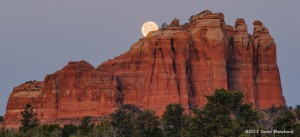Continuing with the thread in the previous post we have more images of fall colors in the Oak Creek Canyon area. This time, we explored a small side canyon known as Harding Springs. Although there is a trail, we chose to walk up the dry wash since the best colors were on trees in and near the stream bed. And we actually found a small trickle of water in a single location.


Later that day we hiked to the top of a rock formation known as Napoleons Tomb in Sedona so that we could watch the (nearly) full moon rise in the gap of Cathedral Rock. To make the image even better, hikers fortuitously positioned themselves in front of the moon. I wish I could say that I orchestrated this but it was just chance!








